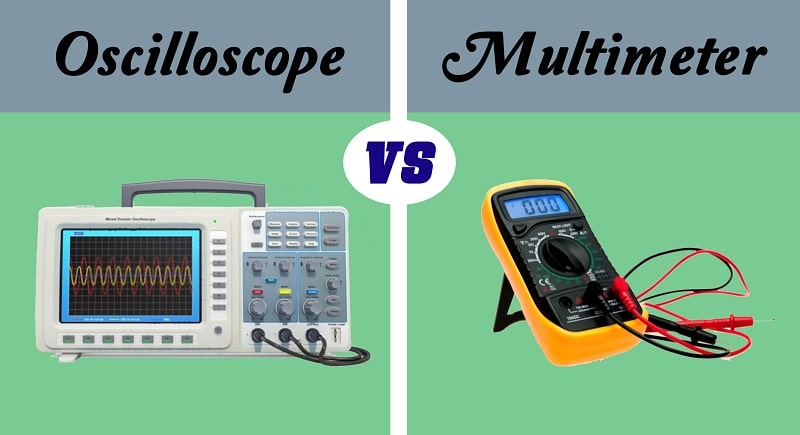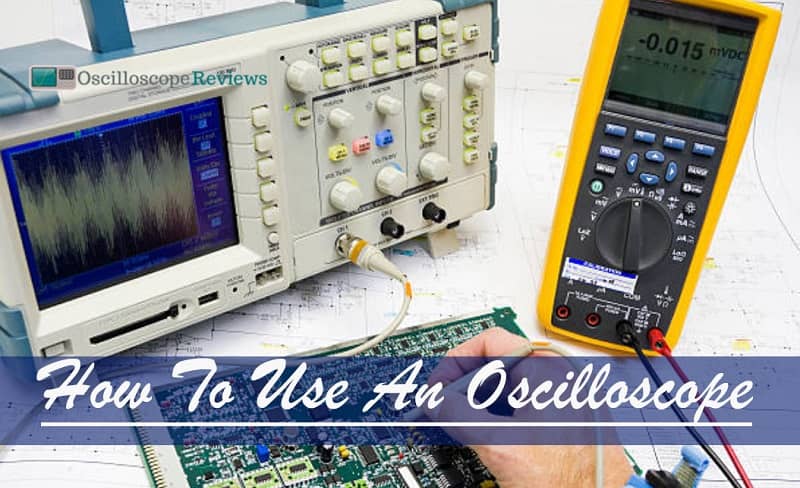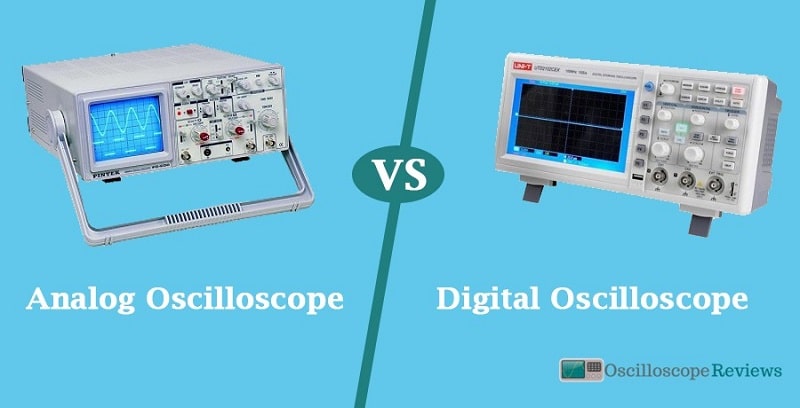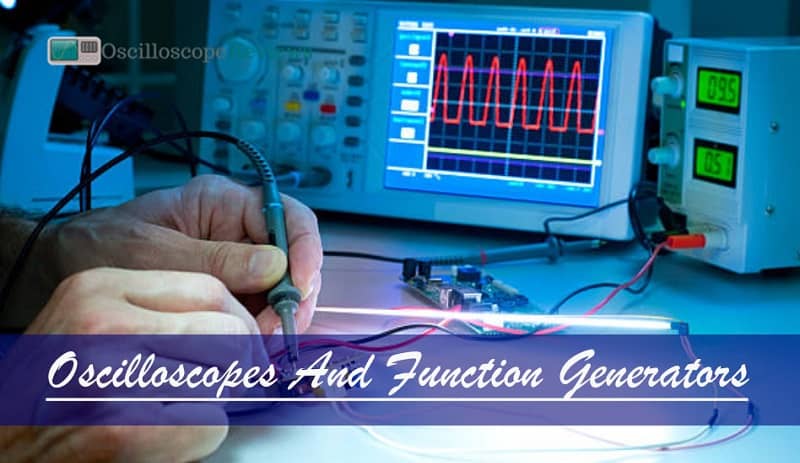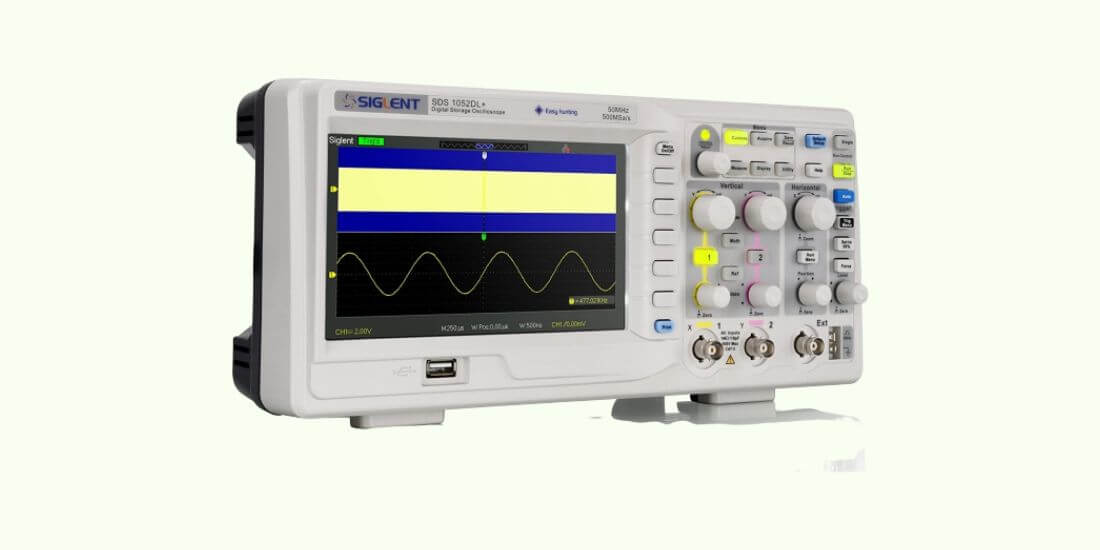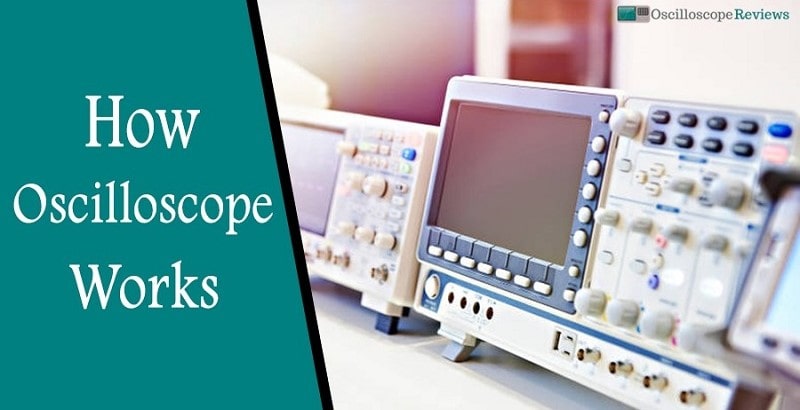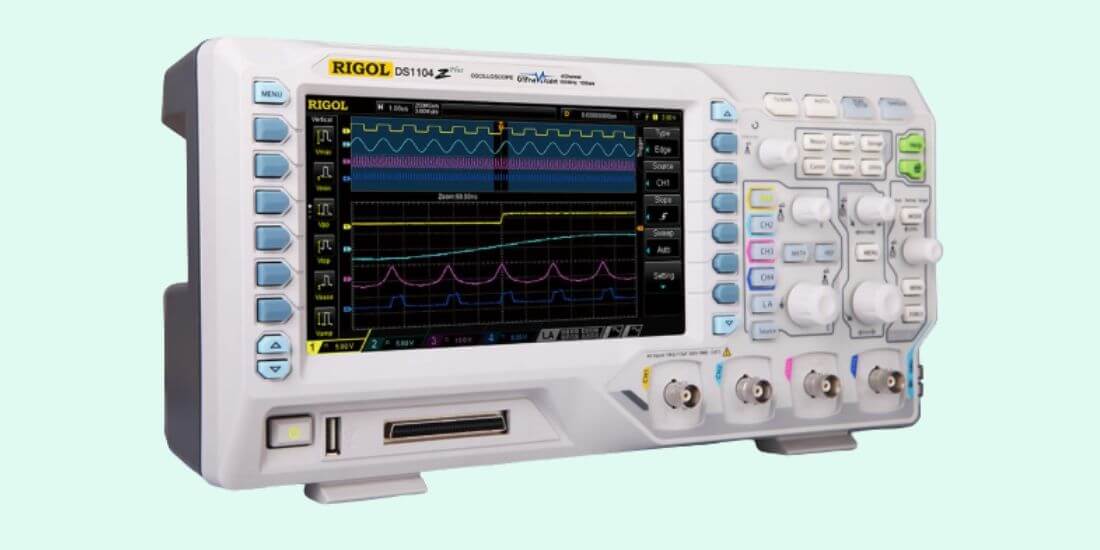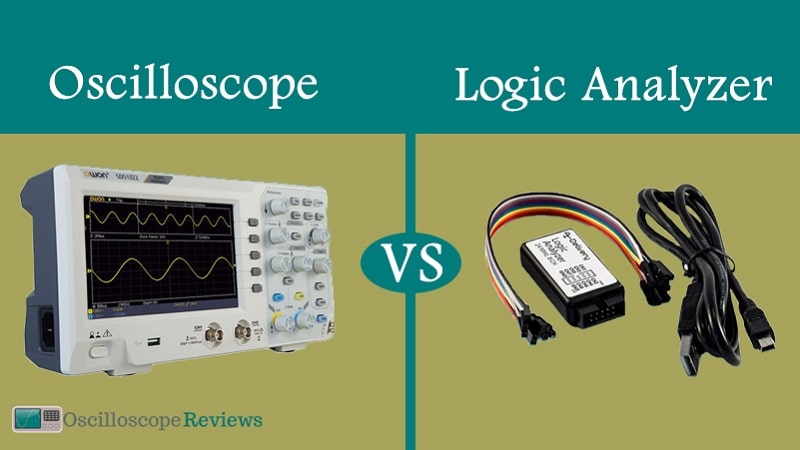Electricity is one of the fantastic inventions made over the past few centuries and has significantly impacted the world. Without it, we would not have achieved much, and things like the internet or televisions wouldn’t exist. It has changed many things, and it is continuing to impact our lives in remarkable ways.
Many people use electricity daily, and that’s all. They don’t bother to know a few things about how electricity is measured or how to protect their resources. There are known instruments that will help you get well-versed with electricity, and you also have to understand how they work.
Oscilloscope vs. multimeter is a hotly discussed topic in the electrical world. And many people coming across such words may wonder what they mean or their connection to electricity use for the first time.
With this in mind, read on and find out what is an oscilloscope or multimeter and how they work.
What an Oscilloscope & a Multimeter Can Do
For those wondering between an oscilloscope and multimeter, which is the better instrument, stress no more. The best answer is in the application of each tool, and there is a lot to know. A multimeter is a measuring instrument that aids in measuring different electrical properties. It is the best instrument to use and measure voltage, current, and resistance.
On the other hand, an oscilloscope is an electronic test instrument that helps graphically display different signal voltages. With this device, you can quickly analyze properties such as frequency, rise time, amplitude, distortion, and time interval of a waveform. The signals you get are displayed on a graph or schematically to show how the signals change.
When looking at the advantages of oscilloscopes over multimeters, there is a lot to know. For example, with the advent of better technologies, we have moved from analog multimeters using a microammeter that uses a moving pointer to display readings. Digital multimeters (DMM) are the in-thing these days and have numeric displays that are easy to read and analyze.
A few decades ago, it was only possible to calibrate signal voltages by manually measuring the waveform against the scales present on the instrument’s screen. With the modern digital storage oscilloscope (DSO), you can directly calculate and display signal voltage properties. In essence, these are two incredible tools, and their primary difference is what they can do. Surprisingly, the only thing that an oscilloscope can do that a multimeter cannot do is check how voltage changes with time. This characteristic is quite imperative when you are inspecting different signals.
You can tell the waveform of a voltage using an oscilloscope. You will know whether you are dealing with a square wave or sine wave. In contrast, the DMM will only show the average voltage level, and you can’t inspect it in depth.
For many people who have used an oscilloscope before, you already know that it can plot two voltages together. Therefore, it’s easy to compare voltages using an oscilloscope. You can have both voltages, input, and output, displayed on the screen, making it easy to see the changes your circuit has made in real-time.
Intrinsically, you don’t have to waste a lot of time going through graphs to analyze your signal voltages. When it comes to a matter of cost, the difference between oscilloscope & multimeter is apparent. The price may vary from where and when you are buying or using this apparatus. However, an oscilloscope will cost you more than a digital multimeter.
The many applications of these instruments make them worthwhile investments. Don’t let their cost derail the projects you intend to pursue. You can use your DMM in many areas if you are an electronics enthusiast or electrician.
And with the advanced tool the oscilloscope is, you can do a lot if you are an experienced practitioner. It’s the best tool for many professionals in the engineering, automotive, sciences, and medicine industry. You will have general-purpose instruments that you can use in many applications.
Everything to Know about Oscilloscope Vs. Multimeter
To clear your doubts about the oscilloscope is which meter; there is a lot to look at. In essence, there is a lot to look at and get the critical differences between these two electrical instruments. More so, this information will guide you to choose the best meter or a combination of both.
Today, there are different types of instruments used to measure various electrical properties. But an oscilloscope and a multimeter are the go-to apparatus. Yet, you have to research widely and pick the best model from these instruments that make them stand out.
Choosing the Best Oscilloscope
If you are well-acquainted with essential oscilloscope measurement, you can go on and take the next step, which is to choose the best oscilloscope. And there are various variables and specifications to take into consideration.
Bandwidth
With an oscilloscope, it’s easy to measure different ranges of frequencies and present them for interpretation with much ease.
Sample Rate
A sample rate helps figure out waveform details the instrument can measure. An oscilloscope that can capture a fast sample rate is the best model to pick.
Number of Channels
The best oscilloscope should have a reliable number of channels. These channels help determine how many signals you can view and analyze simultaneously.
Compatible Probes
Pick an oscilloscope with matching probes and rest assured of accurate measurements. Choose an oscilloscope you can easily connect to the device you are testing as it acts as the transmission line.
Memory Depth
The amount of information the oscilloscope can capture, sample, and store is important. A model with a higher memory depth will capture, analyze, display, and store a vast time frame of the signal.
Different Types of Oscilloscopes
With analog and digital oscilloscopes, it’s wise to look at the different types of oscilloscopes. The common types of digital oscilloscopes include:
- Digital storage oscilloscopes (DSO)
- Mixed-signal oscilloscopes (MSO)
- Digital phosphor oscilloscopes (DPO)
- Digital Sampling Oscilloscopes (DSO) and
- Handheld Oscilloscopes
These are widely used types of oscilloscopes and will satisfy your needs in many incredible ways. So, when looking for the best digital oscilloscopes for sale, keep their diverse uses in mind. The key reasons to go for digital oscilloscope include:
- Real-time analysis as the device displays captured waveforms on the screen
- Precisely and accurately control the shape and size of the waveform
- They are pretty easy to use and measure voltages and other signal measurements.
Choosing the Best Multimeter
When out there looking for the best multimeter, always be cautious in your undertakings. There are several components of a multimeter that you should pay attention to, and they include:
- Digital display
- Switch
- Battery
- Input signal converter
- Digital controller and
- A/D converter
Types of Multimeters
Analog multimeters are cheap but hard to read. They give their readings through a screen display. Digital multimeters come with an excellent display that is brilliantly lit up for easy use. There are several models that you can invest in, and they include:
- Fluke multimeter- Great for measuring electrical voltage, temperature, pressure, humidity, and resistance.
- Automotive multimeter- Reliable for diagnosing problems in vehicles and measuring their electrical properties.
- HVAC multimeter- Used to determine problems in different HVAC units.
- A voltmeter- To measure voltage
- Ohmmeter- Great to measure resistance and
- Ammeter- Exceptional for measuring current.
Many electrical professionals will choose these types of multimeters because:
- They guarantee accuracy in their measurements.
- Have enough memory to store robust data and synchronize with computers.
- Guarantee manual and automatic selection of measuring ranges
- They offer spontaneous output display and
- They hold incredible auto polarity capabilities.
Despite being well-acquainted with the many other types of multimeters, you may be wondering, what is a true RMS multimeter? It’s a type multimeter widely used for measuring alternating voltage and current as not all multimeters can measure RMS (Root Mean Square). You can measure true RMS in:
- Computers
- HVAC
- Electronic ballasts and
- Variable-speed motor drives.
Other Vital Things That Will Help Differentiate Multimeter and Oscilloscope
There is more to know besides the difference between oscilloscope & multimeter. For instance, you may want to know more about multimeter vs. voltmeter.
A voltmeter is an instrument used to measure the difference between two points in an electric circuit. You can also utilize this instrument to measure alternating current or AC as well as radio frequency voltage. Digital voltmeters stand out because they make it easy to display measurements in numeric format.
What tells a voltmeter apart from a multimeter are a few things. Have a look:
- Voltmeters only measure voltage, be it DC, RF, or AC, so they are a part of the multimeter.
- They are usually cheaper than different types of multimeters for sale due to their limited functions.
- Great for use only in electrical engineering and household appliances. Simultaneously, you can use multimeters in the industrial, health, and construction sectors to diagnose different systems, domestic devices, and power supplies.
Difference between Graphing Multimeter Vs. Oscilloscope
Oscilloscopes and multimeters have gone through beautiful changes over the years. They have become more efficient in their work as their jobs are in a way connected. However, differentiating graphing multimeter vs. oscilloscope offers a deep insight. Let get started:
- Oscilloscopes come with bigger screens with grids than graphing multimeters. Hence, they are more versatile for day-to-day use.
- Controls in an oscilloscope are divided into vertical and horizontal sections. But there are no controls in the graphing multimeters.
- Oscilloscopes embrace triggering thanks to the different types of sweeps they use, while graphing multimeters don’t have this option.
- Digital oscilloscopes offer a means to take screenshots of the graphs being displayed on the screen. Unfortunately, this fantastic feature is not found in graphing multimeters.
- Graphing multimeters can only be used in the electrical engineering sector. On the other hand, oscilloscopes are remarkable for use in many industries.
Accuracy of Multimeters and Oscilloscopes
A lot can be said about multimeter vs. oscilloscope accuracy. Digital multimeters guarantee a high accuracy of 5 to 8 digits resolution. This is excellent accuracy that increases their functionality. On the other hand, oscilloscopes have better bandwidth, but they don’t have the precision and high resolution that multimeters exhibit.
That’s why they are the premier devices to use in the electrical engineering world. Now you may be wondering whether an oscilloscope is a multimeter or voltmeter and can be used in different applications. Well, worry not. If you use a Cathode Ray Oscilloscope (CRO), you will have a reliable instrument to measure the possible difference between two points.
This is a remarkable technique that a voltmeter uses, but there are a few factors to consider. Have a look:
- You will have to use a DRO instead of CRO, as it’s a digitized type of oscilloscope and relatively easy to use.
- DROs offer more functions than when using CROs as your voltmeter.
Understanding Multimeter Oscilloscope Schematic
Electrical professionals or any person using a multimeter oscilloscope should understand how schematic diagrams work for quality representation. The Digital multimeter oscilloscope schematic is all about representing features of a system using graphic symbols instead of genuine pictures.
A schematic will omit all the irrelevant details to make a graphic presentation easier to understand. In essence, it will save time and show how all the electronic elements are interconnected in an easy-to-read format.
Review of the Best Oscilloscope Multimeter
When looking for the best oscilloscope multimeter, look for a high-quality, reliable, and versatile model. Don’t just pick any oscilloscope multimeter you find on sale. An oscilloscope multimeter review will guide you to make the right decision.
Interestingly, you will choose an instrument that you can use in many applications without any uncertainties or difficulties. You can replace the voltage measuring device you use with a one-of-a-kind oscilloscope multimeter combo.
Ensure it’s a model you can use for many applications. For instance, you can get a model combination of multimeter and oscilloscope with unique features. Fluke is one of the standout oscilloscope multimeter brands you will, without a doubt, fall in love with.
Fluke oscilloscope multimeter is designed to be used in the electrical field without any hitches. You can also use this to service medical imaging equipment, automation devices, avionics, and industrial electrical equipment. It will show you problems that other devices you have cannot detect or offer reliable solutions.
If you are an electronics enthusiast or beginner, feel free to get one of the best Fluke multimeters with an oscilloscope. Get a model that comes in the perfect bandwidth and ensure it’s a reliable type of oscilloscope. It should also feature a dedicated number of channels, a wide variety of features to tackle different measurements and work in different environments.
Conclusion
Understanding the critical difference between oscilloscope vs. multimeter will help you learn how each instrument works. You will also go on and understand the many features that make these devices stand out. Most importantly, you will know how to choose the best oscilloscope multimeter to undertake a variety of measurements. Feel free to select a type of oscilloscope or multimeter that will perfectly fit into your area of operation.

